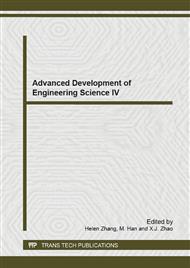p.54
p.58
p.62
p.68
p.72
p.76
p.83
p.88
p.92
Biodegradation of Aniline by Alkaliphilic Strain Bacillus sp. Strain AN2 under High Salinity Condition
Abstract:
Aniline is considered as an environment hazard. Aniline-containing wastewater frequently has elevated salinity and high pH, which is generally not degraded by neutrophilic bacteria. The research explored the degradation ability of aniline by the novel isolated bacterial strain under alkaline and hyperhaline conditions. The strain was designated Bacillus sp. AN2 based on 16S rDNA sequence and Biolog Microstation Identification System. This strain had an unusually high salinity tolerance in minimal medium (0-6% NaCl, w/v). The optimal pH for microbial growth and aniline biodegradation was pH 9.0. For the initial concentrations of 200, 500, and 800 mgL-1, 95%, 74% and 62% of the aniline was degraded, respectively. The results suggest that the strain has potential for aniline degradation under alkaline and elevated salinity environmental conditions.
Info:
Periodical:
Pages:
72-75
Citation:
Online since:
October 2014
Authors:
Keywords:
Price:
Сopyright:
© 2014 Trans Tech Publications Ltd. All Rights Reserved
Share:
Citation:


